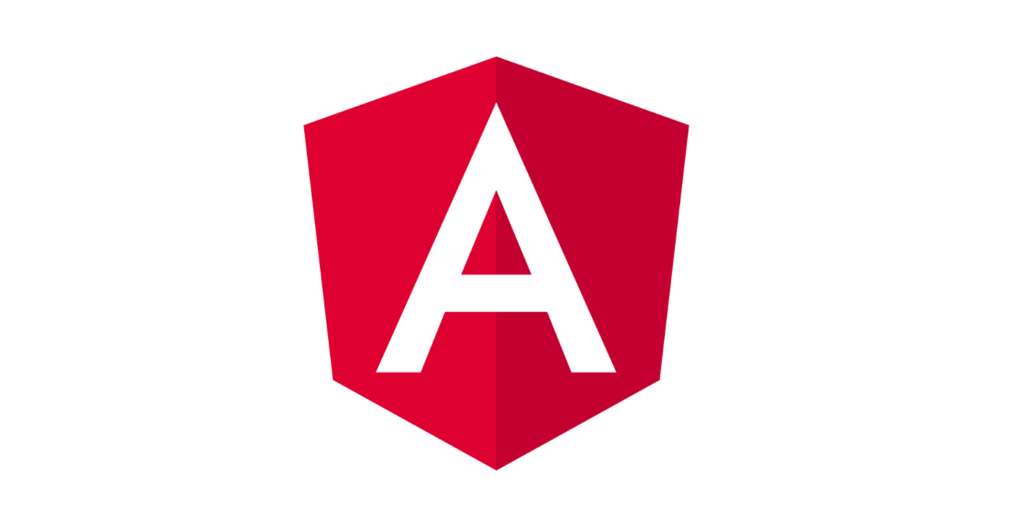It is a widely known fact – JavaScript is the top language for front-end development. Its enormous libraries and resources are unparallel when compared to other programs for building modern website functions. Moreover, JavaScript’s 24 frameworks are a plus point to get countless benefits.
However, when it comes to choosing one ideal framework, it sets any developer thinking for a long time. Matching the appropriate archetype with your project parameters is an important aspect to integrate functions into the web structure.
Using a framework for web development has simplified the developers’ work. While addressing a few vital Java frameworks, three of the popular JavaScript frameworks – Angular, React, and Vue, are the top-tier options that come to your mind.
Given that their exceptional infrastructure offers an upper hand in efficient development, confusion for any developer at such times is a common thing. The only question that remains at the end –
‘Which framework is the best fit from Angular vs React vs Vue?’
To explore them, first, let us understand the framework concept in short.
What is Framework? | Definition
A framework is a primary structure that is majorly applied in website and application development. Its code composition can be reused and has the ability to execute the same functions on any platform. Its enormous in-built tools, libraries, and conventions make the website performance more comprehensible.
Moreover, to minimize the developers’ time, frameworks aid in sustaining the code through reusable code modules and design patterns as it helps in organizing the website functions. In this way, it becomes easier to instill functions like user interface, data-gathering, and two-way server communication.
Top Web Application Frameworks for Web Development Trends
Now that you are clear on the framework concept, let’s dig into the differences between Angular vs React vs Vue.
What is Angular?

Angular was developed by Google as a front-end framework that provides an ideal solution to build large-scale applications. The framework focuses on a highly standardized architecture enabling the developers to create complex applications with ease.
With its extensive toolset, the framework has a high-end database structure for handling complex data. Hence, it becomes convenient for various Angular development services to fasten their website development process.
What are the Features of Angular?
Two-Way Data Binding:
As Angular has an MVC architecture (Model-View-Controller), its two-way data binding function enables data synchronization between the model and the view automatically. Hence, changes in the model are visible in the view, making it easier to maintain a consistent UI.
Dependency Injection:
The framework’s dependency injection system helps manage component dependencies by allowing components to receive their required dependencies rather than creating them within the component. It makes testing and code maintenance less time-consuming. However, to do so, it requires to hire an Angular development company for maintaining the code.
Template Syntax:
For the developer’s understandability, Angular’s template syntax integrated HTML with template expressions that allow displaying of dynamic data and manipulation of the DOM.
RxJS Integration:
Since libraries add efficiency to website development, the popular framework integrates RxJS (a reactive programming library) for handling asynchronous operations and managing complex data flows within various applications.
Router:
From one of many modules, the router module allows the developers to create Single Page Applications (SPAs) with built-in functions like navigation, routing, and view rendering capabilities.
HTTP Client:
Handling the user interface is an important aspect of any website. For that, built-in HTTP client protocol simplifies making HTTP requests to APIs. This manages user responses and handles errors without a hitch.
Benefits of Angular You Should Know if You Want
- Rich Template Syntax: Angular’s HTML-based template syntax, coupled with powerful directives, provides a straightforward way to create dynamic UIs.
- Angular CLI: The Angular Command Line Interface streamlines project setup, development, testing, and deployment tasks.
- Angular Universal: Angular supports server-side rendering through Angular Universal, improving initial page load performance and SEO.
- Directives and Custom Components: Angular allows developers to create custom directives and components, promoting code reusability and extending application behavior.
- Cross-Platform Development: Angular can be used to build web applications as well as mobile apps through technologies like Ionic.
- Type-Safe Templates: TypeScript’s strong typing extends to Angular templates, ensuring type safety and reducing potential runtime errors.
What is React?

Created by Facebook, React is a framework consisting of reusable components. Its virtual DOM mechanism allows for efficient updates to the user interface functionalities, resulting in enhanced performance.
On top of that, this framework’s popularity is driven by its agility in web development, enabling React js development services to integrate it seamlessly with other libraries and tools. Although React itself is relatively minimalistic, the ecosystem surrounding it increases the website quality through any React js development services.
Top Features of React Which Makes It Best For Development
Virtual DOM:
For optimizing updates on UI, React uses a virtual DOM which is a lightweight version of DOM. These changes are first applied to the virtual DOM and then efficiently updated on the actual DOM, minimizing unnecessary re-renders.
Unidirectional Data Flow:
To segregate the data, the Reactive framework enforces a unidirectional flow of data, making it easier to understand and manage how data changes propagate through components.
JSX (JavaScript XML):
JSX is a syntax extension that enables developers to write HTML-like code within JavaScript, making component rendering and structure more intuitive.
Component Lifecycle Methods:
React components have lifecycle methods that enable developers to perform actions at different stages of a component’s lifecycle, like initialization, updates, and unmounting.
React Hooks:
Hooks are functions that allow developers to use state and other React features without writing a class. They simplify component logic and make it easier to reuse code.
Context API:
The Context API enables the sharing of data between components without needing to pass props through every level of the component tree.
Top 5 Benefits of React for Website Development
- Efficient Rendering: Upgrading data of current page status streamlines the website. Using React’s Virtual DOM optimizes and enhances rendering performance by the manipulation of DOM.
- Component Reusability: Without developing the codes from scratch, the popular framework’s component-based architecture eases the work of developers through its code reusability. By such means, building the website and reusing modular UI components gets simplified.
- Declarative Syntax: The UI of any website can be more unique as React’s declarative approach to UI development enables the detailing. It illustrates the structure of UI should look based on the current state, rather than imperatively defining each update. But to do so, you need to hire ReactJS developers that have an in-depth understanding of React’s syntax.
- Rich Ecosystem: Given that React was launched in 2013, it has a vast ecosystem of libraries and tools, such as state management solutions and UI component libraries, providing developers with a variety of options.
- Community Support: React amasses a large and active community with over forty thousand members, which means plenty of tutorials, documentation, and community-contributed solutions are available.
React vs Angular: Choosing the Better Option for Front-End Development
What is Vue?

Vue framework, also commonly known as the “progressive framework,” has a combined balance between the attributes of both Angular’s all-inclusiveness and React’s simplicity. Backed by an active open-source community, Vue provides an adaptable solution for projects of various scales.
Its extensive core library focuses on the view layer, making it easy for Vue developers to integrate with other libraries or existing projects. Additionally, the framework’s reactivity system and built-in state management tool, facilitate efficient data handling has comprehensiveness that enables the developers to understand the code.
What are the Key Features of VueJS?
Component-Based Architecture:
Vue.js revolves around building applications with reusable components, promoting a modular and organized development approach.
Reactive Data Binding:
Vue.js employs a reactive data binding system that automatically updates the DOM when the underlying data changes, ensuring real-time synchronization between data and the UI.
Template Syntax:
The framework utilizes a concise template syntax that resembles HTML, making it easier to define the structure of components and their interactions. However, to understand them, approaching the right services to hire Vue js development company will speed up the development process in time.
Vue Router:
The Vue framework’s router provides routing capabilities for building SPAs, allowing developers to define navigation paths and render components based on URL changes.
Vue CLI:
Defining project design in an organized manner saves up the developer’s time in quick website development. Hence, this framework’s Command Line Interface (CLI) simplifies project setup by providing a pre-configured development environment and build tools.
Single-File Components:
Considering that every single unit of the website should be coordinated, the JS framework allows developers to state all the components in a single file. It combines HTML, JavaScript, and CSS in a distinct cohesive unit.
Nonetheless, it is an intrinsic work that requires a well-ordered structure. And to do so, you need to hire a web development company with expertise in handling these files systematically.
What are the Benefits of Vue?
- Flexible Integration: Vue can be incrementally adopted into existing projects, allowing developers to use it alongside other libraries or frameworks without major disruptions.
- Versatile Templating: As Vue utilizes HTML template syntax, it elaborates every component structure and logic to simplify the website functionality, speeding up the single-page performance.
- Vue Router: The official Vue Router offers execution of logic codes through routing and navigation capabilities for building SPAs (Single Page Applications).
- Transition Effects: To make the website’s graphic interface more appealing, Vue’s built-in transition system provides templates, elements, and design patterns that add up to smooth animations and transitions for an engrossing user experience.
Angular vs Vue: Guide for Choosing a Perfect Framework?
Angular Vs React Vs Vue: Short Difference
| Angular | React | Vue | |
| Launch Year | 2010 | 2013 | 2014 |
| Developed by | Evan You | ||
| Learning Curve | Steeper due to composite concepts | Quick learning due to Simpler concepts | Easy to learn for the beginners |
| Community | Extensive and active community | Extensive and active community | Growing community |
| Ecosystem | Consists of integrated tools for various functions | Considerably popular and hence widely used | Started gaining popularity |
| Performance | Swift performance by compiling ahead-of-compilation | High performance via Virtual DOM | Flawless performance |
| Data Binding | Both one-way and two-way binding | One-way binding | Both one-way and two-way binding |
| Rendering | Server-side rendering | Client-side rendering | Client-side rendering |
| Architecture | MVC (Model-View-Controller) architecture | Uses large building blocks for reusing components | MVVM (Model-View-ViewModel) architecture |
| Template Syntax | HTML templates with directives | JavaScript XML (JSX) | HTML templates with directives |
Consult From a Reliable Website Development Company
Whether it is Angular, React, or Vue, all these frameworks are the highly preferred JS platforms in the end. Their extensive libraries and toolset facilitate quick solutions to expand your business with your sustainable online platform. A well-put-through innovative idea in your website can keep it exclusive from other online platforms.
However, choosing between Angular vs React vs Vue would need an expert’s insight who can build a seamless website. So, hire a website app development company in the USA with the right skillsets to provide you with appropriate guidance and maintenance services even after the website launch.
For other inquiries and requires guidance, contact us for more details.
FAQs
Can Angular and React work together?
Yes, Angular and React can compatibly work together on the same project. Regardless of their distinct attributes, each component can by using HTML elements to separate their contexts, allowing you to leverage the performance of the website.
Which is more popular? Angular or Vue?
There is a time gap of a few years between both frameworks’ launches. Angular (2010) was released way before Vue (2014). This is why Angular has an extensive community with numerous available resources whereas Vue is still growing.
What are DOM and Virtual DOM?
Document Object Model (DOM) is an interface for updating the structure and content of the document. Whereas the virtual DOM is a lightweight structure of DOM. It updates the web page elements on real DOM to speed up the website performance.
Read Also:-
- Website Support And Maintenance
- Marketplace App Growth Brand – Get Your Brand Noticed
- Order Management Software In ECommerce
- Top PWA Frameworks for Progressive Web App Development



